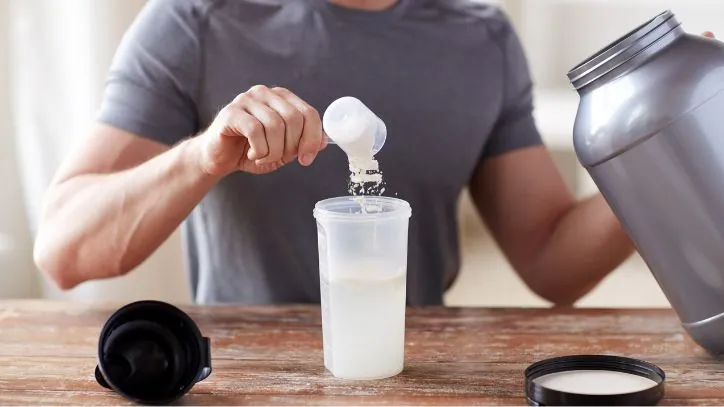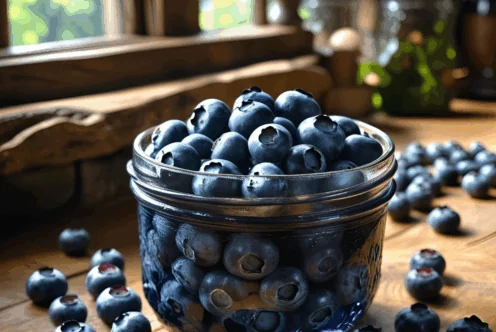Blog
Recover Like You Mean It: The Real Work Starts After the Workout

There’s nothing like the feeling after a good, hard sweat, heart-pumping, intense workout. But what you do after your workout is as important as what you do during it. Recovery isn’t just about plopping on the couch and calling it a day. (Although we’ve all earned a lazy day now and then). It’s an active, intentional process that sets your body up to get stronger, faster, and more resilient.
Let’s delve into effective recovery, from post-workout meals that rebuild and refuel to hydration habits, mobility routines, and restorative practices that support your next session. Whether lifting weights, running trails, or sweating in a Pilates class, this article will guide you to bounce back smarter.
Let’s kick things off by talking about fuel! Did you know your body is primed to absorb nutrients after a workout? It’s like a sponge ready to rebuild. The goal is to strike a balance of protein, carbohydrates, fluids, and micronutrients that promote muscle recovery, reduces inflammation, and restores energy levels.
Protein
Protein is the MVP of post-workout recovery. After a tough session, your muscles experience tiny microtears, a normal and necessary part of growth. Protein helps rebuild and strengthen them. A solid dose of protein is around 20 to 30 grams.
According to the experts, that sweet spot gives your body enough amino acids to repair tissue, build lean muscle, and reduce the soreness that can sneak up the next day. Whether you aim to gain strength, lean out, or recover better, protein should always be part of your post-workout plate.
What does 20-30 grams of protein look like?
- Grilled chicken breast 3-4 oz
- 3 to 4 eggs or six egg whites
- 1 cup of Greek yogurt
- 1 scoop of protein powder
- 1 cup of cottage cheese
Pro Tip: Nutritionists suggest pairing your protein with carbs and small fats for a complete recovery meal. This helps your body absorb nutrients more effectively and keeps you satisfied for longer. However, sometimes I’m not even hungry after a good workout, so I turn to a smoothie or protein shake, which is the perfect option until I’m hungry again.

Carbohydrates
Carbohydrates often get a bad rap. But after a workout, they can be your best friend. When you train, your body taps into glycogen, which is essentially stored carbs in your muscles. Think of it as your internal fuel tank. Once it’s used up, you’re running on empty, which will leave you feeling drained, dizzy, or sluggish.
To restore those levels and keep your energy steady for the rest of the day (and tomorrow’s workout), aim for around 40-60 grams of carbs post session. This isn’t about sugar bombs or crash-and-burn snacks. It’s about complex, whole-food sources that give your body lasting energy and essential nutrients.
What 40-60 grams of carbs look like:
- 1 medium sweet potato or regular baked potato
- 1 cup cooked brown rice or quinoa
- 2 slices of whole-grain toast
- 1 cup cooked oats
- 1 banana + ½ cup berries.
Pro tip: Again, nutritionists and sports trainers suggest combining carbs with protein to supercharge your recovery. Carbs spike insulin slightly, which helps shuttle protein into your muscles more efficiently, accelerating the repair process. And don’t forget: if you’re working out intensely or in the brutal Arizona heat, your body may crave carbs more than usual.
If you find yourself craving something more familiar and comforting post-exercise, chocolate milk is an excellent choice that often flies under the radar. This nostalgic drink has entered serious athletes and casual gym-goers. Because chocolate milk boasts a nearly perfect 3:1 ratio of carbohydrates to protein, it’s particularly effective for muscle recovery and glycogen replenishment. Additionally, it provides essential electrolytes such as calcium, potassium, and magnesium, which are vital for rehydration after a strenuous session.
A typical 8-ounce serving offers:
- 8 grams of protein for muscle repair
- 24-30 grams of carbs for glycogen restoration
- Essential electrolytes to replace what’s lost in sweat
It’s convenient, affordable, and backed by research. Plus, let’s be honest—it tastes like a reward for a well-done job.
Pro Tip: If you’re dairy-sensitive, lactose-free milk options still deliver a decent nutrient profile. Just make sure to check the label for protein content and added sugars.
Sometimes recovery doesn’t need to be complicated. Just a cold glass of chocolate milk and a moment to catch your breath might be the sweet spot your body—and soul—needs.
Hydration + Electrolytes
Following a vigorous workout session, it’s crucial to rehydrate and replenish the essential fluids that you lost through sweating. Your body has undergone a significant physical demand, requiring proper nourishment to aid recovery. You should aim to drink 16-24 oz of fluid within 30 minutes of completing your session. If you’re hiking one of Arizona’s amazing trails, you might want to add electrolytes to your water.
Pro tip: You don’t need a fancy sports drink; coconut water or citrus juice with sea salt can do the job naturally. Some ways to rehydrate include water with lemon and a pinch of sea salt, coconut water, homemade electrolyte drinks (citrus juice, honey, sea salt, water), or electrolyte tablets or powders.
Micronutrients & Anti-inflammatory Boosts
Incorporating nutrients that support recovery and overall well-being can help minimize muscle soreness after physical activity and enhance the body’s immune response. Some great options include leafy greens and berries, which are rich in antioxidants; turmeric and ginger, which are natural anti-inflammatories; and avocado, which provides healthy fats and potassium.
Recovery isn’t just about food—it’s also about intentional movement. That means engaging in activities that nourish both body and mind, helping you reconnect with yourself. Whether it’s a gentle yoga session, a walk in nature, or a fun dance class, moving with purpose helps release endorphins, reduce stress, and foster a deeper sense of well-being.
Finding forms of movement, you genuinely enjoy is important because you’re more likely to stick with them when they feel good. Embracing movement as part of your recovery routine enhances your physical health and mindset, reinforcing that wellness is more than just what’s on your plate.
Consider this Recovery Tracker Idea: Log your recovery habits for a week to enhance your recovery. Did you hydrate? Stretch? Eat enough protein? Use emojis, a checklist, or an app to keep it simple and visual. You’ll start noticing patterns by tracking these activities, and your body will thank you.
Move with Purpose: How Recovery Is More Than Stillness
Some great ways to be more intentional with movement include stretching 5–10 minutes after your workout to reduce tightness and improve blood flow. Foam rolling or using a massage ball can target sore spots and prevent stiffness.
After I finish a tough workout, whether a heavy lift session or a sweaty cardio grind, I have a little ritual that helps me recover and reset. I usually start with a quick protein shake to get something in my system while I stretch and cool down. Then, I’ll sip some water with a pinch of sea salt or grab a cold coconut water to rehydrate. Nothing hits quite like a glass of chocolate milk if I’m feeling extra depleted—it’s nostalgic, satisfying, and honestly feels like a reward. After that, I try to slow things down with 10–15 minutes of foam rolling or light yoga, especially if my muscles are tight. It’s not just about the physical recovery; it’s about giving my body the respect it deserves. These small habits have helped me stay consistent, avoid burnout, and come back stronger each time I hit the gym.
Quick Recovery Toolkit:
✅ 20–30g of protein post-workout
✅ 40–60g of complex carbs
✅ 16–24 oz water within 30 minutes
✅ Add electrolytes if needed (especially in the heat)
✅ Stretch or foam roll for 10 minutes
✅ Get 7–9 hours of sleep
✅ Active recovery on rest days (walk, yoga, cycle)
I love incorporating active recovery like yoga, walking, or cycling on rest days. These gentle movements keep my body loose without overloading it. Before I started adding active recovery into my routine, I used to overtrain, pushing myself to the point of muscle fatigue. That eventually led to plateaus in my progress. But I’ve noticed improvements since shifting my approach and giving my body the care it needs. When I return to lifting, my muscles feel stronger, more rejuvenated, and ready to take on the next challenge.
While post-workout nutrition, hydration, and mobility play critical roles in recovery, sleep is the secret weapon many overlook. When we sleep, our bodies go into deep repair mode, rebuilding muscle tissue, releasing growth hormone, and solidifying all the hard work we put in the gym. Without enough sleep, your recovery efforts get cut short, leaving you feeling sluggish, sore, and more prone to burnout or injury.
Sleep experts suggest aiming for 7 to 9 hours of quality sleep each night, especially after a demanding workout. Your bedtime routine matters too. Try winding down with light stretching, reading, or breathing exercises, anything that helps calm your nervous system. Limit caffeine late in the day. Reduce screen time an hour before bed to give your brain a chance to power down.
I’ve noticed that when I prioritize sleep, everything improves: my energy, mood, even my performance in the gym. Sleep isn’t slacking, it’s how you lock in gains.
Recovery is where real progress begins. After an intense workout, your body needs more than rest—smart refueling, rehydration, and movement, from protein-packed meals that rebuild muscles to complex carbohydrates that restore energy, what you eat matters. Even chocolate milk earns its place as a powerhouse recovery drink, thanks to its ideal nutrient ratio and electrolyte boost. Hydration is equally key, especially in Arizona’s heat, with natural options like coconut water or citrus juice with sea salt doing the trick. Layer in anti-inflammatory foods like berries, greens, and turmeric; you’ve got a recipe for resilience. But recovery isn’t just physical it’s mental too. Gentle movement, stretching, yoga, and foam rolling help release tension, prevent stiffness, and keep your body ready for more. When you embrace recovery with intention, you don’t just bounce back you come back better.
By Joel Carr, Arizona Farm Bureau Strategic Communication Manager


















